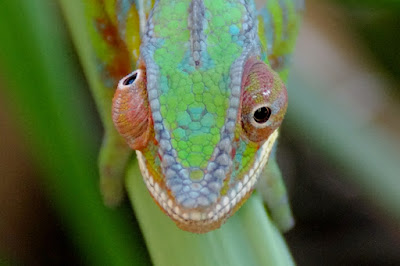QUESTION 1:
We just read a book called Africa Brothers and Sisters by Regina Kroll. We loved it! We learned a lot about many African tribes like the Zulu and the Ashanti and the Ibo and the Falasha. What are some tribes in Madagascar?Answer:
We have many tribes all across Madagascar- 18 total! My community's tribe is Antakarana, which means "people who live in the spiny rocks." The name comes from a war in Madagascar where the people were driven into an area with special sharp rocks called "tsingy" as a place to defend themselves ("tsingy" also means "to walk on tiptoe" because the rocks are too pointy to go barefoot on!). I got to visit the tsingy in February, which is pictured below!
Question 2:
What animals have you seen? We wonder if you ever see lemurs or snakes or peacocks?
Answer:
I've seen a ton of cool animals in Madagascar!! I have seen several snakes, the largest being about five feet long. Fortunately, Madagascar doesn't have any poisonous ones! I haven't seen any peacocks, but I have seen several species of lemurs! Here are a few photos of them.
 |
| Golden Crown lemur (female) |
I've also seen many chameleons! These pictured below are all panther chameleons (plus one day gecko!) that live in my region. Most of these photos were taken right in my back yard!

And that's not all... I've also seen some fruit bats (also called "flying foxes" here!), tortoises, and whale sharks!
 |
| This Flying Fox, a.k.a. fruit bat, is about the size of a human head! |
 |
| This tortoise is 30 years old! |
 |
| My friend swimming over a whale shark (image still by my other friend Tyler Chase!) |
Question 3:
How is your rice crop going? All of us love rice. Some people like it with butter and some like it Chinese style. How do the people in Madagascar eat their rice? Is it white rice, brown rice or yellow rice?
Answer:
As far as rice goes, Malagasy people LOVE white rice. It's a huge part of the culture! Most of the time it is eaten steamed plain with a little bit of vegetables and sometimes a meat sauce or beans to mix in with it. Many Malagasy people eat rice three times a day!
We just had a big harvest and replanting season in my community. We farm all the rice by hand, and the first part of that is preparing the rice fields with the help of cattle. The cattle are walked around the rice paddy to help break up the ground for planting! This time, I got to walk the cattle around myself...
Question 4:
We wonder what the houses are made out of in Madagascar? Are they made from wood? Straw? Mud?
Answer:
There are many kinds of different houses in Madagascar...what they are made out of usually depends on the region. In the highlands, it is common to have houses made out of clay mud and bricks where that resource is plentiful. In the coastal areas, it is more typical to have houses made out of ravinala branches (similar to palm). Then there are some houses that are made out of concrete, which is more common in the cities but not as much in the rural areas. I love the diversity and some of the architecture of Madagascar's homes!
 |
| Highlands house made with mud, sticks, and a thatched roof. |
 |
| Coastal house made with ravinala. |













No comments:
Post a Comment